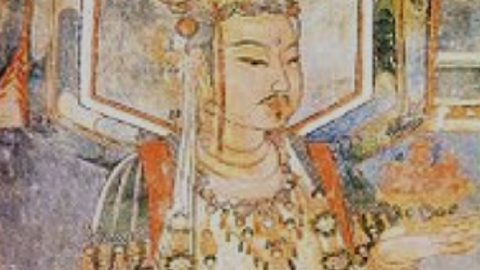Over recent years, the growing trend for fermented teas has escalated to dizzying new heights. People are literally bubbling with excitement for fermented beverages and for very good reason. Even those with the most angelic diets need some gut health boosting to counteract heavy foods that are eaten from time to time - fermented teas are an easy way to keep this in check. In essence, when we ingest living health cultures and probiotics, we give our gut a liquid hug which nourishes our microbiome.

Kombucha tea is a household name for those in-the-know and has introduced health-seekers to the wellness potential of fermented tonics. Now stepping into the wellness limelight is the mystical cousin of Kombucha, Jun tea.
Both Jun and Kombucha offer a delicious dose of probiotics in addition to an energy-boost from the tea base and natural, sparkly effervescence. Both fermented teas have similar health benefits and mystical origins, they are each unique in their own right. We’re going to explore the intricacies of both fermented teas to ensure you know the ins and outs of these sparkling health elixirs.
What is Kombucha?
There are umpteen benefits of the widely popular fermented probiotic drink that is Kombucha. It is celebrated as a healing tonic that brings the body back into balance by detoxifying and alkalising the body. Research sites that digesting Kombucha supports healthy liver function, aids digestion and gut health, supports joints, and even boosts the immune system.
As diverse and myriad as the benefits, the origins of Kombucha are widely debated in Far Eastern cultures. One source believes the name originates from the Japanese version of kombucha tea made from ‘kombu’ (Japanese for kelp). Another piece of research sites that a Korean physician named Dr. Kombu treated the Korean emperor with a healing tea, hence ‘kombu’ and ‘cha’ (which translates to tea). The most recognised area of origin is China stretching back to 213 BC during the Chinese Jin Dynasty. During this epoch, Kombucha was referred to as the ‘tea of immortality’ and ‘the elixir of life’ according to this source.

We probably will never know the origin for sure, but this adds to its mysticism and magic. One thing we do know for sure here at Loving Foods is what it takes to brew Kombucha and the process to make this healing effervescent beverage.
Our Kombucha is brewed or fermented over a period up to 3 weeks and it thrives in a warm environment with plenty of clean air. Using a symbiotic colony of yeast (SCOBY), the culture is combined with green tea and naturally sweetened with organic cane sugar. This technique is a time-honoured method of preparation and what we practice to make our range of Kombucha beverages each one exploring delectable flavour combinations which add personality to each bottle.
Jun Tea - The Champagne of Kombucha.
Jun Tea is a traditional fermented tonic made with green tea and honey and touts similar health benefits to Kombucha Tea. Jun is not so much a different drink entirely as a slightly different variation on the same concept. We like to think of it as a hybrid of Kombucha Tea and Honey Mead. In parallel with Kombucha, Jun’s conception is also somewhat shrouded in mysterious origins.
According to this research on ancient Chinese lore, Jun dates back to 600 BC originating in the Tibetan Himalayas. It is believed that Laozin, an ancient philosopher, gave an heirloom culture to the monks of Bon in Tibet. Brewed by these monks, the revered health tonic was (and still is) prized for its capacity to open up ‘Chi’ (energy). The Tibetan Kampha Nomads, who were also trained spiritual and physical warriors, are said to have gained knowledge on how to brew this drink from the Bonpo Monks, cosseting Jun’s energising ‘Jing’ - the essence to balance body, mind and spirit. Tales also abound of legendary Samurai warriors riding through the Himalayan mountains with this sacred elixir to boost their energy and spirit.

These stories are open to much debate as there are no texts or physical evidence to back this up. Just as there is a little magic in Jun Tea, we like to think that there is some truth behind these tales of age. Myths and legends aside, there are some distinguishing facts about Jun Tea. A Jun SCOBY is a distinctly different culture to Kombucha, with its own unique flavour profile. The SCOBY is lighter and paler in colour and the fermentation colonies feed off honey rather than sugar (watch out for this one, Vegan friends!)
Jun Tea uses the same amount of tea and sweetener as Kombucha however due to the unique culture, it ferments much faster and thrives at a lower temperature. Jun is brews typically for 2 weeks and the fermentation results in a drink packed full of vitamins, enzymes and probiotics, prized by cultures throughout the world, who value its ability to promote good health and wellbeing.
The lighter, faster brewing ferment also hold opportunity for unique flavour combinations. Our Lemon and Ginger Jun has been revered by Loving Foods friends as an excellent aid to combating the common cold. The honey, healing ginger and energising, cleansing properties of lemon help to ward off fatigue and fogginess.

The Wonders of Kombucha and Jun Tea.
We hope that this summary provides you with some useful information to elevate your health guru status and we hope you will enjoy experimenting and finding a brew that’s right for you. Discover our range of fermented drinks over here and if you’re feeling adventurous, you can try a case of mixed Kombucha and Jun Tea so you can really get set for the test!



On Jan 18, 2024